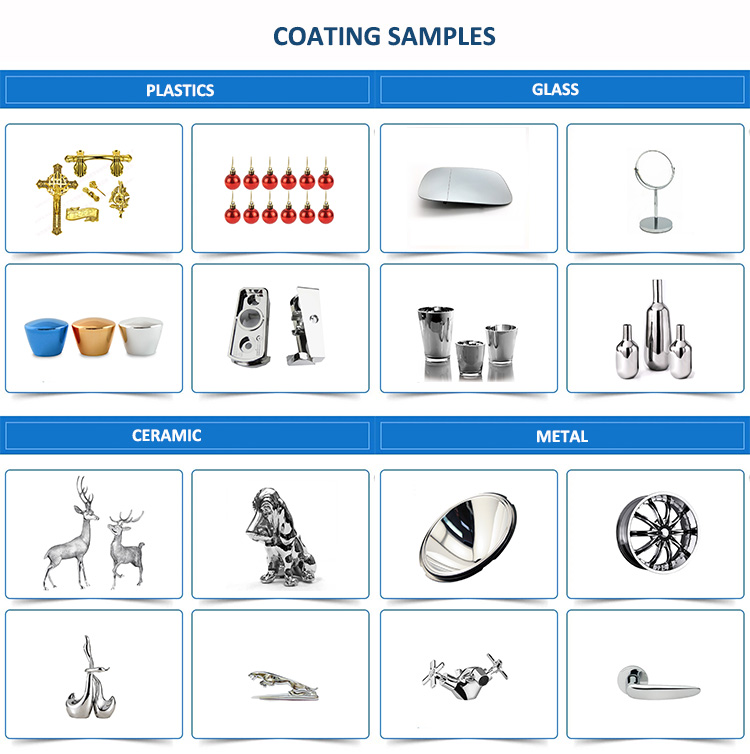Vacuum Plating Machine for Plastic Parts

Usually the application for plastic substrate in vacuum coating is decorative, vacuum metallizing. The involved technology is vacuum thermal evaporation. We use pure aluminum as raw material, to apply a mirror finishing layer on plastics, to make it look like metals. Vacuum metallizing is the most simple technology in PVD area. The added value of plastic parts are not high, so we make big chambers or one machine with two doors, or even dual chambers in the machine, to improve the production output.
The involved industries could be, headlamp reflectors, Christmas balls and decorations, cosmetic packages, plastic caps, aluminum mirror, coffin handles, clock backplates, etc.

Vacuum metallization process
Loading the substrate: Load the cleaned and pretreated substrate into the chamber of the vacuum metallization equipment. Pay attention to the loading method to avoid mutual collision or pressure between the substrates.
Vacuumizing: After closing the chamber door, start the vacuum pump to vacuumize the chamber until the required vacuum degree is reached. The choice of vacuum depends on the specific metallization process and the type of substrate.
Evaporation or sputtering:
Evaporation coating: coating materials (such as metal wires, metal sheets or metal particles) are heated in a vacuum environment to evaporate them into gaseous atoms or molecules, which are then deposited on the surface of the substrate to form a metal film.
Sputtering coating: The use of high-energy particles (such as ions) to bombard the coating material (metal target), so that its atoms or molecules are sputtered out and deposited on the substrate. More dense and uniform metal films are usually obtained by sputter coating.

